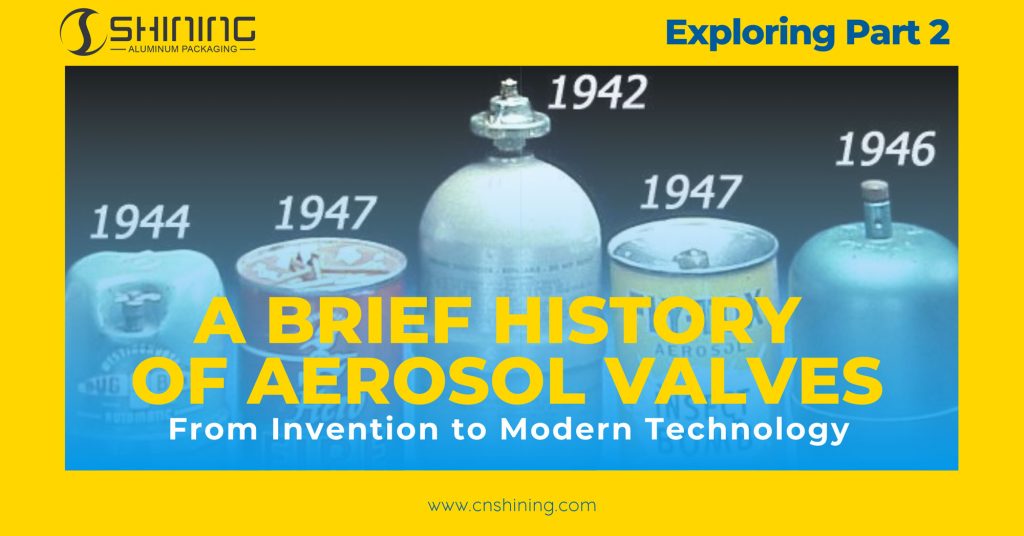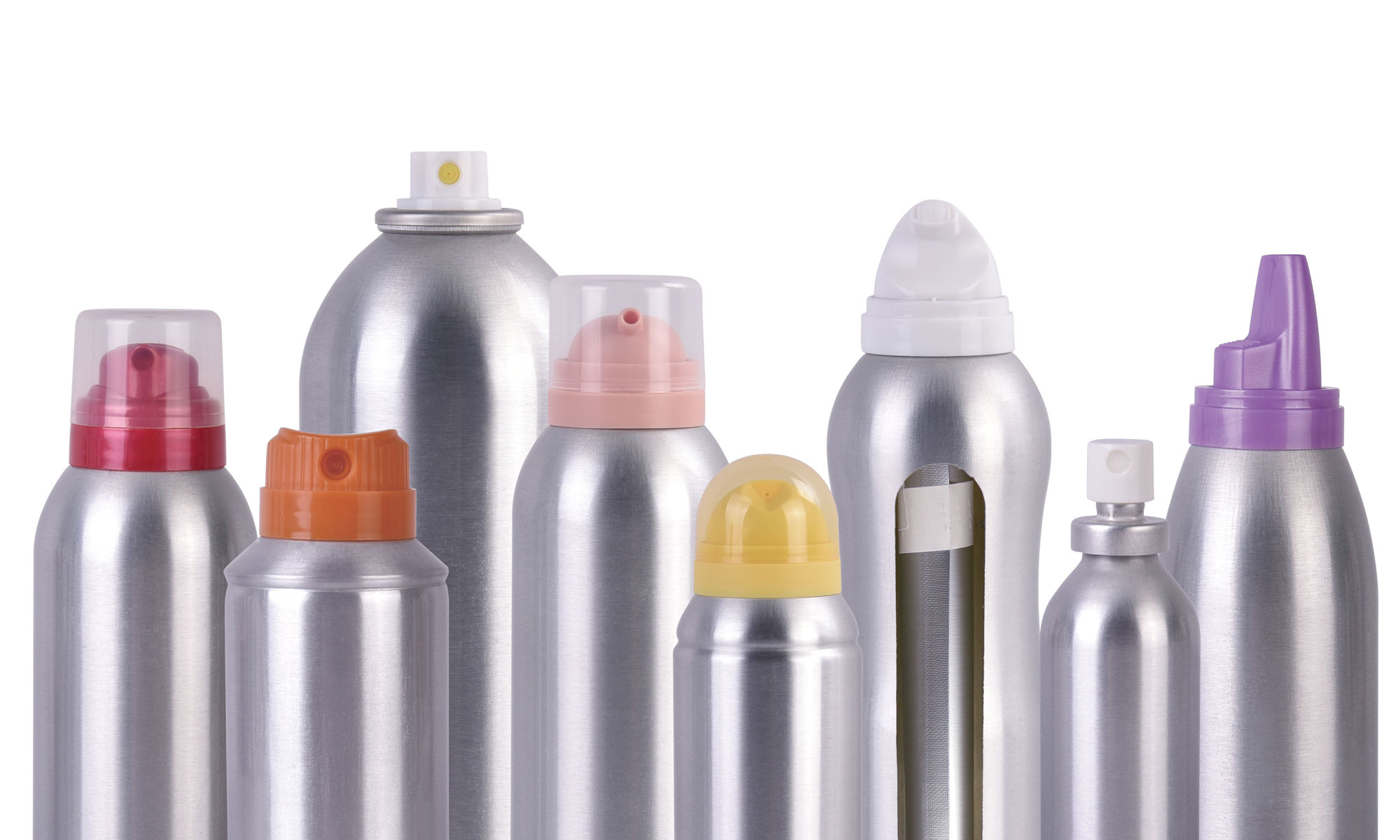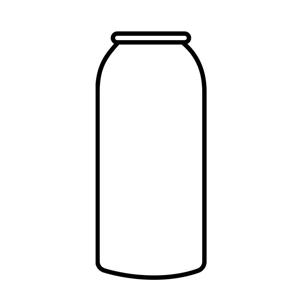Aerosol valves have come a long way since their inception, evolving from simple dispensing mechanisms to sophisticated, high-performance devices used across various industries. As a leading aerosol valve manufacturer, we’re proud to contribute to the innovation and advancement of these crucial components. In this article, we’ll take you through the origins, milestones, and recent advancements in aerosol valve technology, along with a few insider tips on selecting and using these valves effectively.
Early Origins and Development
The story of aerosol technology begins in the early 20th century, with a need to dispense liquids in a controlled, portable format. Early experiments in Norway, particularly by Erik Rotheim in 1927, led to the first aerosol can patent. Rotheim’s valve system could control a pressurized product’s release, laying the groundwork for the aerosol valves we use today. During WWII, the technology received significant attention and development, driven by the U.S. military’s need for insect repellents in mosquito-infested areas. This demand sparked improvements that expanded aerosol valve applications beyond military use to a broad consumer market after the war.
Milestones in Aerosol Valve Design
In 1949, Robert H. Abplanalp transformed the aerosol valve industry by inventing a low-cost, reliable valve design that could be mass-produced. This innovation allowed aerosol products to become accessible worldwide, revolutionizing markets for personal care, food, household products, and pharmaceuticals. Over time, advances such as spray pattern control, adjustable flow rates, and precise sealing mechanisms were integrated into valve designs, creating the versatility and efficiency that modern industries rely on.
Today, aerosol valves are engineered to meet specific needs, whether it’s for a fine mist spray in cosmetic products or a strong, targeted stream for cleaning solutions. The industry has adopted more refined manufacturing techniques, like laser cutting and robotic assembly, ensuring that each valve meets the high standards required for reliability and safety in consumer use.
Modern Innovations & Future Directions
Advancements in aerosol valve technology continue to evolve, driven by environmental concerns and consumer demand for sustainable solutions. Modern aerosol valves now prioritize recyclability, and many are made from recyclable metals, while also featuring low-emission propellants to reduce environmental impact. Additionally, research into new propellants and biodegradable components shows promise for making aerosol products even more eco-friendly.
Another innovation shaping the future of aerosol valves is the introduction of smart valves, which allow for electronic control over spray and dispensing. This technology opens doors to applications requiring precision, such as medical and pharmaceutical aerosols. Looking ahead, aerosol valve manufacturers are investing in research to optimize materials, improve safety, and enhance functionality, ensuring these devices meet both consumer and regulatory expectations.
Insider Tips: Selecting and Using Aerosol Valves
- Tip #1: When selecting an aerosol valve, always consider the viscosity and composition of the product. This will determine the ideal valve type and spray pattern.
- Tip #2: For maximum performance, match the valve’s flow rate to the intended application. For example, choose a fine mist actuator for personal care products or a stronger actuator for industrial use.
- Tip #3: Regularly check crimping quality during valve installation. Proper crimping ensures a tight seal, preventing leakage and maintaining the integrity of the aerosol product.
- Tip #4: Test valves in various orientations if the product requires multi-angle dispensing. Some valves are designed for 360-degree spray, which is perfect for home and auto care products.
Frequently Asked Questions (FAQ)
- What are the main components of an aerosol valve?
An aerosol valve includes the actuator, stem, gasket, housing, and dip tube, each serving a specific function in controlling the spray. - How has aerosol valve technology evolved over the years?
It started with basic spray mechanisms in the early 1900s and evolved into precision-engineered systems with modern advancements in safety, functionality, and environmental sustainability. - What factors should be considered when choosing an aerosol valve?
Key factors include product viscosity, spray pattern, flow rate, and the required compatibility with the product’s chemical composition. - What is the significance of crimping in aerosol valve manufacturing?
Crimping securely attaches the valve to the can, ensuring a leak-proof seal. Proper crimping is crucial for maintaining product quality and safety. - Are aerosol valves environmentally friendly?
Many modern aerosol valves use recyclable materials, and manufacturers are focusing on sustainable options like low-emission propellants. - Can aerosol valves be customized for specific applications?
Yes, aerosol valves can be customized in terms of spray patterns, flow rates, and materials to suit various industries, from cosmetics to pharmaceuticals. - What are barrier aerosol valves?
Barrier valves separate the product from the propellant, making them ideal for products that require precise dispensing or have sensitive formulations. - How do propellants affect aerosol valve performance?
The choice of propellant impacts pressure, spray pattern, and stability. Compressed gases provide a different spray consistency than liquefied propellants. - How is quality control ensured in aerosol valve production?
Quality control includes testing for leaks, measuring spray rates, and ensuring material compatibility to meet industry standards. - Where can I find more information or consult with an expert on aerosol valves?
Visit our product page for detailed information, or contact us to discuss your specific needs with our expert team.
Whether you are new to aerosol technology or a seasoned industry professional, understanding the history and development of aerosol valves is key to making informed purchasing decisions. We invite you to explore our wide range of aerosol valves and see how our commitment to innovation and quality can support your product’s needs.

















